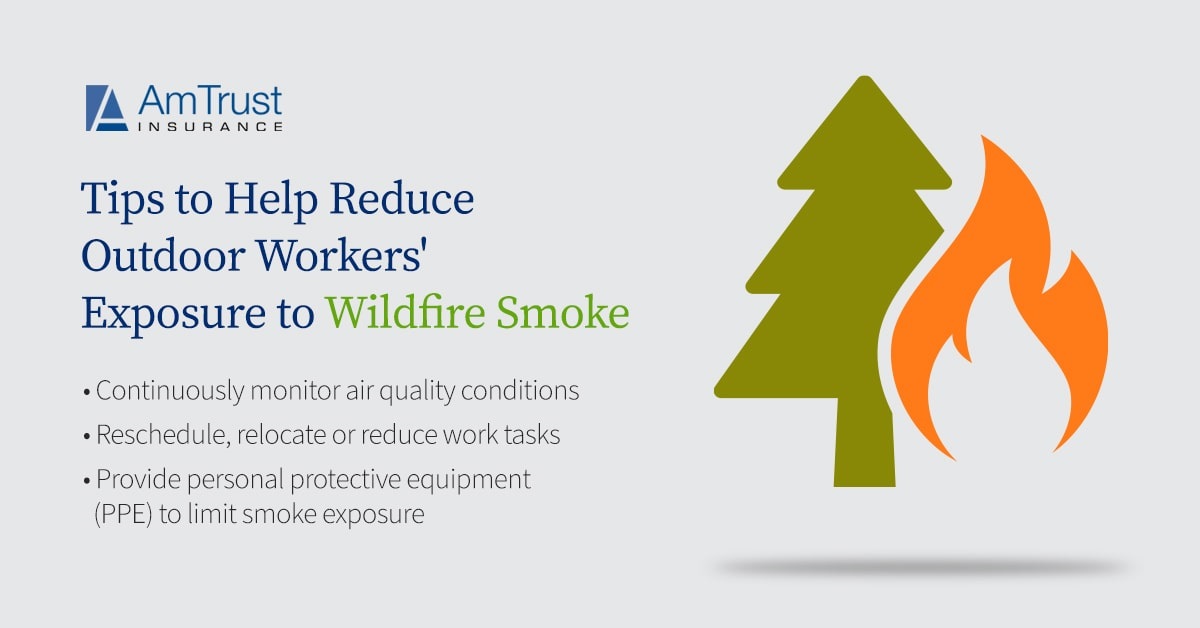Summary: Employers need to ensure the safety of their employees exposed to poor air quality from wildfire smoke. Learn what steps employers can take to help reduce outdoor workers’ health risks related to wildfire smoke. Wildfire Smoke and Air Quality: Keeping Workers Safe

The Canadian wildfires continue to burn at a record-setting pace. As our neighbors in the north deal with these active fires raging across areas like Quebec and Ontario, the United States is feeling their impact, too. Air quality has been at dangerously unhealthy levels throughout many parts of the country, with the Midwest and the East Coast being among the most severely affected.
While health officials recommend people stay indoors as much as possible while the air quality is so poor, that is not an option for many outdoor workers. Employers need to take steps to ensure they keep worker safety in mind during these hazardous outdoor conditions.
Reducing Outdoor Workers’ Exposure to Wildfire Smoke
Wildfire smoke can affect the body in several ways, from as simple as burning or stinging eyes or a runny nose to worsening chronic respiratory conditions. People with conditions like COPD or asthma, children and expectant mothers are at a higher risk from exposure to wildfire smoke. Employees who work outside, like construction workers or landscapers, are also at an increased risk for health issues associated with poor air quality.
While eliminating the hazards of wildfire smoke altogether is impossible, employers can take measures to help ensure their workers' safety. The Centers for Disease Control and Prevention (CDC) has several tips to help
reduce outdoor workers’ exposure to wildfires, including the following:

Continuously monitor air quality conditions
Employers can view the Environmental Protection Agency’s (EPA)
Fire and Smoke Map or their state health department’s air quality website to get an accurate idea of how poor the air quality might be in their specific location.
Reschedule, relocate or reduce work tasks
It may be possible to reschedule some tasks to a different time of day after the air quality has improved somewhat. Or, relocate workers to areas less affected by wildfire smoke. Employers can also reduce some of the physical activity associated with some job duties, moving strenuous tasks to a time when the air quality is better. Frequent breaks indoors should also be encouraged to allow workers to rest indoors or in places free of smoky air.
Provide personal protective equipment (PPE) to limit smoke exposure
Some outdoor workers may benefit from using PPE, such as respirators, to limit their exposure to wildfire smoke. An N95® mask and other
NIOSH Approved® filtering respirators can help reduce the amount of airborne particulars a worker is exposed to in poor air quality conditions.

The AmTrust Loss Control Department Helps Protect Your Workforce
The AmTrust
Loss Control department specializes in risk management solutions to prevent injuries and improve employee safety during a disaster like a
wildfire. To learn more about our loss control services, please
contact us today.
This material is for informational purposes only and is not legal or business advice. Neither AmTrust Financial Services, Inc. nor any of its subsidiaries or affiliates represents or warrants that the information contained herein is appropriate or suitable for any specific business or legal purpose. Readers seeking resolution of specific questions should consult their business and/or legal advisors. Coverages may vary by location. Contact your local RSM for more information.